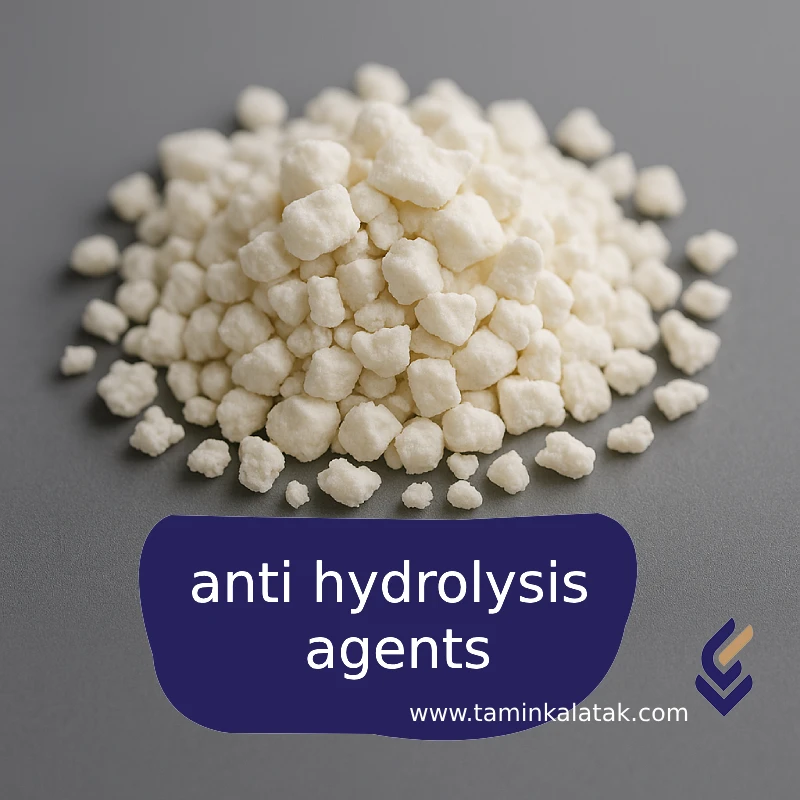Polymers are made up of very large molecules made up of many repeating units called monomers, which ultimately form this long polymer chain
Anti-Hydrolysis Agents
Anti-Hydrolysis Agents are typically organic or inorganic compounds added to polymers to enhance their resistance against degradation caused by moisture and water exposure. These additives commonly include carbodiimides, phosphites, organophosphites, or phenolic derivatives, which work by either absorbing or neutralizing water molecules or inhibiting hydrolytic reactions, thus preventing the breakdown of polymer chains.
These agents are especially useful for polymers such as polyurethanes (PU), polyesters (PET, PBT), and polyamides (nylons), which are more susceptible to hydrolysis.
Key Features of Anti-Hydrolysis Agents
-
Enhanced stability against moisture and water vapor.
-
Reduction in polymer chain degradation under humid environmental conditions.
-
Good thermal stability, allowing use in industrial processes such as injection molding or extrusion.
-
Compatibility with a wide range of polymers without affecting color or mechanical properties.
Applications of Anti-Hydrolysis Agents
✅ Automotive Industry
Used in interior components to prevent moisture-induced degradation, especially in regions with high humidity or harsh environmental conditions.
✅ Packaging Industry
Improves the durability of polymeric packaging materials exposed to water or steam, such as refrigerated or moist food packaging.
✅ Construction Industry
Applied in insulation materials, window profiles, and other polymer-based building components to resist weathering and moisture exposure.
✅ Electronics Industry
Prevents polymer degradation in electronic housings, wire coatings, and cable insulation exposed to humidity and temperature variations.
✅ Footwear and Textile Industries
Used in polymeric shoe soles and synthetic fibers to enhance durability and resistance to moisture-induced deterioration.
Disadvantages of Anti-Hydrolysis Agents
-
Slightly increases final product cost.
-
Requires careful selection based on polymer type and usage conditions.
-
Possible incompatibility with certain other additives, such as UV stabilizers.
Advantages of Anti-Hydrolysis Agents
✅ Extends the service life of polymer components.
✅ Ideal for hot, humid, or outdoor environments.
✅ Provides long-term chemical and mechanical stability.
✅ Maintains the core properties of the polymer when properly formulated.
Applications
| Applications | , , , , |
|---|
Anti-Hydrolysis Agents
| Products | Grid | Melt Flow Index (MFI) (g/10 min) | Density (g/mm³) | Process method | Applications |
|---|---|---|---|---|---|
| Polyester-based anti-hydrolysis additive | AH-PE900 | 45,00 | 115,00 | Extrusion/Injection | Automotive parts, electrical equipment, industrial pipes and fittings |
| Polyamide-based anti-hydrolysis additive | AH-PA350 | 32,00 | 118,00 | Injection | Medical equipment, mechanical parts exposed to moisture, engineering connections |
| Multipurpose anti-hydrolysis additive | AH-MULTI750 | 6,00 | 11,00 | Extrusion | Industrial packaging, industrial footwear and clothing, outdoor equipment |
| Polymer anti-hydrolysis masterbatch | MB-HydroSafe | 28,00 | 112,00 | Injection/Film | Home appliances, engineering components, high humidity and high temperature environmental applications |







